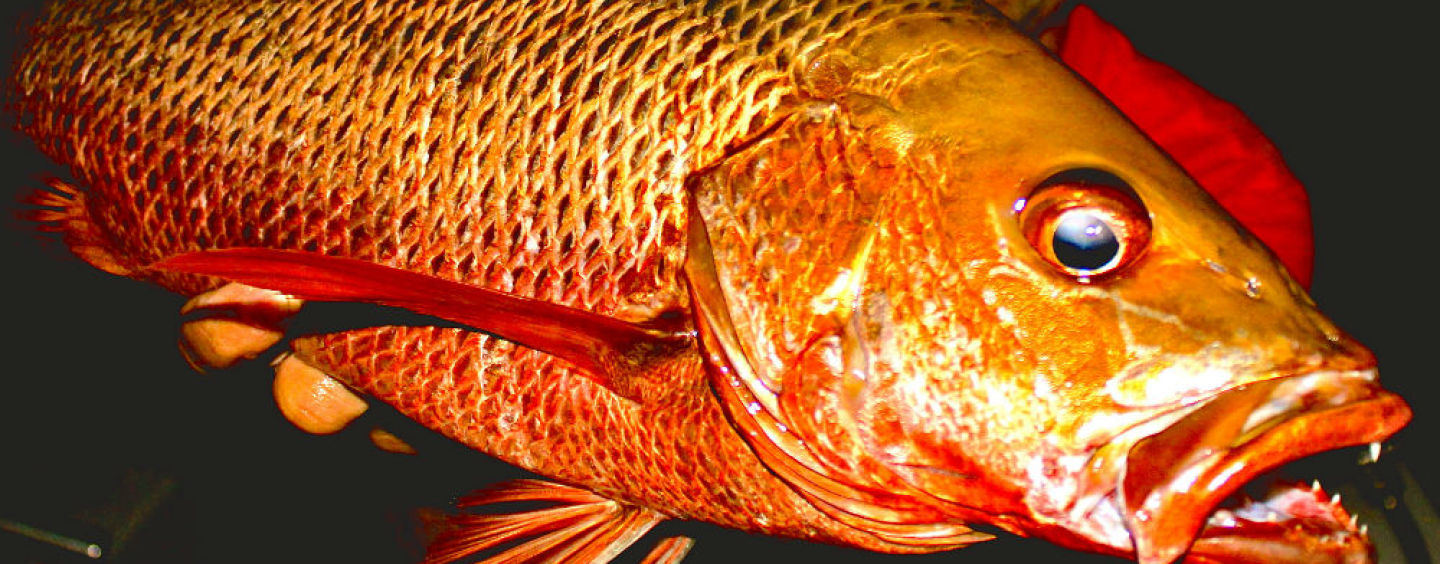The ultimate fishing challenge on the Gold Coast is hooking a mangrove jack. Danny Sands of the Gold Coast Sports Fishing Club shares information and tips on catching this feisty fish.
Red dogs, red fish, red bream, red devil or mangrove jack. Whatever you like to call them, mangrove jacks would have to be the most popular estuary sport fish on the Gold Coast in the summer months. They are not the biggest fish, but what they lack in size they make up for by outshining any other fish with aggression, power and their dirty fighting techniques.
A word of warning: this is very addictive and at times frustrating as you can spend hours fishing, then bang! A jack hits your lure and busts you off in a split second. This usually causes intense swearing or maybe a good rod slap on the water to get your frustrations out. A few minutes later, you either start laughing at yourself or end up crying. If you persist, you can land the fish of a lifetime!
A love story
I caught my first mangrove jack many years ago at the age of eight. It was at Paradise Point off the bank on a white pilchard. I still remember the fight on my Alvey reel and butterworth rod. I recall that when I picked up the mangrove jack, only a pup (around 40cms), the little fella barked like a dog, and as quick as a flash drove his teeth into my thumb drawing blood. I have loved them ever since.
As days start to lengthen and the weather starts to warm, the casting arms of the mangrove jack fisherman start to twitch, with thoughts of explosive hits and screaming runs against tightly locked drags. The Gold Coast boasts a healthy population of mangrove jacks and although they can be caught year round, the prime time for chasing these fish, is from October to April.
The right conditions
Structure: Extensive canal systems, rock walls, pontoons, retaining walls, bridges and lay-down timber are homes to jacks. The most productive areas typically hold water between 1.5-4m in depth and have water temperatures between 25-30C with decent tidal flow.
Times and Tides: The run-out tide seems to be best in most spots. As tide begins to fall, the mangrove jacks often push prawns and bait fish up against retaining walls. Low light periods from sunrise until 10am, and at 3pm through to sunset you can expect increased bite, often tapering off throughout the middle of the day, just not as frequently. It becomes more important to ensure your lure remains right next to the structure.
Weather: Hot, humid days, especially when stormy weather is forecasted are the good fishing days. They feed more actively during these conditions. Barometric pressure also has a strong impact on mangrove jacks. A very high barometer reading of over 1020 hpa or a very low reading under 1000hpa are both conducive to a good bite. A rapidly dropping barometer, often experienced prior to a storm, can also result in productive fishing. A wind change can bring them onto a bite. For example, if the Gold Coast has a hot northerly wind for a week and then have a wind change from the South East, this will also bring mangrove jacks onto the bite.
Tackle
Rods: Use a shorter rod for a better casting accuracy, a critical factor for fishing jacks. If you want to consistently land mangrove jacks, especially better quality fish, it is important to use a heavier rod in the 3-6kg range to pull these hard-fighting fish away from their snaggy lairs. I have two rods, a 6’6” spin rod at 8 -15lb and a 6’baitcast rod at 8-14lb.
Reels: Use a small, lightweight reel that has a smooth drag and decent drag capacity. I prefer to use 2500 size spin reels, light and compact, making casting lures comfortable for several hours, while still having the potential to pack up to 7-9 kg of drag. It’s better to have extra drag available, you might need it.
Lures: Ask five different fishermen about their favourite jack lure and you will probably get five different answers. It is easiest to break different lures into three categories: soft plastics, diving hard bodies and top water lures. However, it is critical to keep the lure tight to structure if you want to consistently catch these fish. Natural colours such as white, brown/copper, dark green, silver and gold are the most productive.
Soft Plastics – Use shad style soft plastics such as Z-Man Diezel Minnows and Swimmers between 3-5 inches on a 3/8th or ½ ounce jighead depending on the amount of tidal flow in the area. I only use heavy gauge jigheads due to the brutality of these fish on terminal tackle gear and prefer to use a 2/0 – 4/0 size hook as they usually hit the lure towards the head after watching them feed on live bait in fish tanks. When using soft plastics around pontoons, use a constant slow-medium paced retrieve, keeping the lure just below the pontoon, as this is where the fish will be holding.
Diving Hard Body for fishing rock walls, retaining walls and bridges – You can crank these lures along slopes of the rock walls and along concrete footing of bridge pylons. Lure sizes between 55-110mm range that dive to 2-5 metres and a slow-medium paced retrieve with the occasional twitch and pause. It is important to ensure you use heavy gauge trebles.
Top water lures for a thrill – It is visual fishing with the spectacular surface strike. Early mornings, and late afternoons and nighttimes are the prime times to use poppers, as mangrove jacks will leave their snag and search for food during this time. The top water bite is best from February till April. This is because after our summer rains and storms, we get our first run of jelly prawns that run throughout estuaries.
These tips provide you with the building blocks towards catching mangrove jacks. But as with any form of fishing, the best advice is to get out onto the water and put theory into practice and make adjustments to suit your personal style of fishing.



























